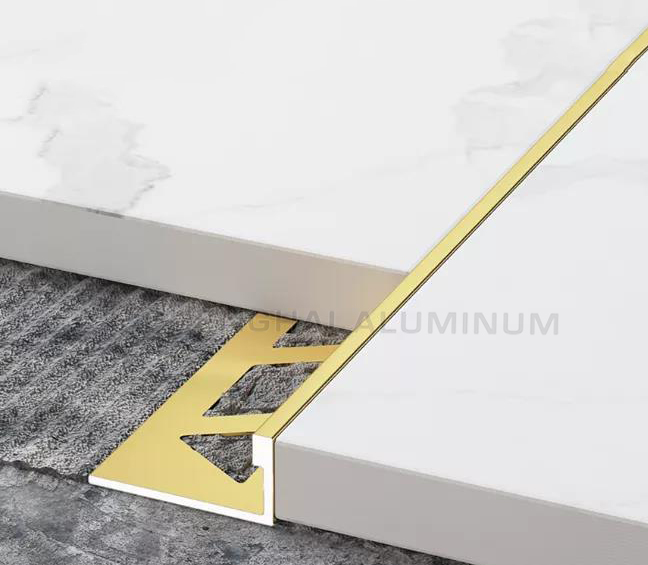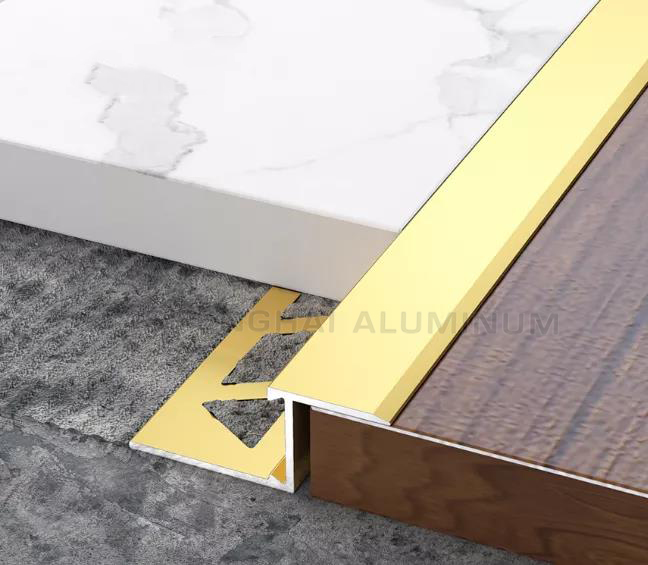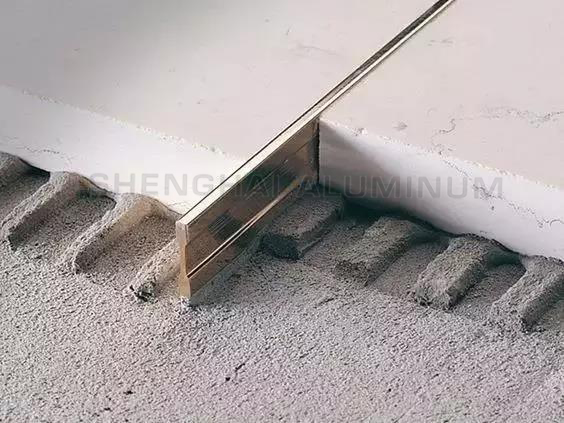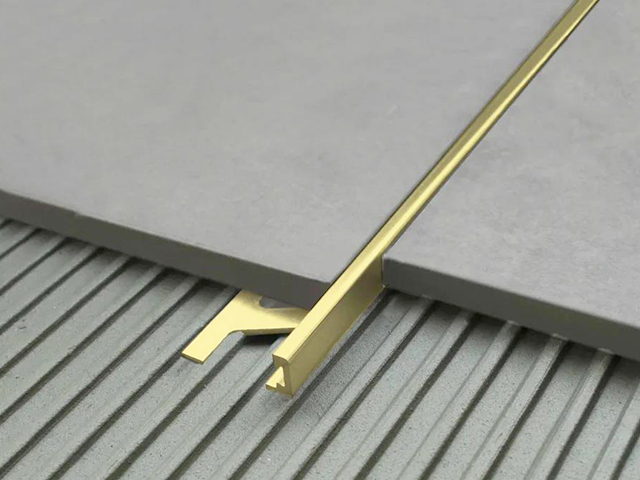How to Use Aluminum Trim Strip
Updated: 6 Jan 2022
Aluminum trim strip is very popular in home decoration. Standard metal trim strips include stainless steel and aluminum edge trim. Of course, aluminum edging strip is a very good trimming material and a perfect decorative material.
As a professional aluminum profile manufacturer, SHENGHAI shares knowledge related to aluminum trim strips.
1. The style and size of Aluminum strip
2. Design and installation of Aluminium trim strip
What are the types of Aluminum trim?
First of all, we know that the size, color and shape of aluminum lines can be customized. Standard metal tile edge strips applied to the top surface of the wall are U-shaped, flat, T-shaped, hat shape and L-shaped.


1. U shape aluminum trim strip profile
The custom-made size for on-site measurement is usually 20mm, while the finished product can reach about 5mm. There are usually two situations in the use of Aluminum edge: U-shaped on both sides and U-shaped on both sides of different lengths.
U-shaped aluminum trim on both sides is used for flat surfaces with no height difference on the left and right sides and can be purchased as a finished product or customized on-site measuring rulers. The U-shaped metal lines with inconsistent lengths on the two sides are often used to close the shape with a height difference on the left and right sides. Because of the uncertainty of the height difference, most of them need to be customized on-site.
2. Flat aluminum trim strip
There are not many flat aluminum trim strip applications, some are completely flat, and there are also two-sided edging (the edging is often used for wood veneer surfaces), and the standard widths are 10mm, 15mm, 20mm, 35mm.
A. Used for ceiling concave groove
Flat metal lines are often used in the ceiling groove or directly attached to the wood veneer. Because it is directly pasted, you don’t have to worry about being picked off by children or accidentally kicked when used on the top surface.
However, because the coating at the groove is not easy to apply, it is often replaced by U-shaped metal lines.
B. Used on wood veneer
If used on wood veneer (wall shape or cabinet door), there is a hidden danger of loosening. It is not commonly used and is not recommended. The operation is as follows:
① Gluing: apply glue dots on the back of the line.
② Paste: Paste the line to the place to be decorated.
③ Fixing: Fix with tape until the glue is dry.

3. T-shaped aluminum line
There are many T-shaped metal line styles. The thinner the line, the stronger the sense. In order to increase the stability of the paste, the embedded part of the T-shaped metal line is usually designed into various barbs or zigzag shapes.
4.Aluminum Hat trim strip
Aluminum hat trim is commonly used in wooden doors, cabinet doors, background walls, waistlines and wall decorations. Some front and back sides can be as small as about 5mm. The narrowest size of the convex surface can also be 5mm.
5.L shape aluminum trim strip
L-shaped metal lines are often used in the concave and convex corners, and they can be directly glued.

Do you want to customize an aluminum trim strip of your own? Welcome to submit your demand information to us.
As a professional aluminum profile manufacturer, SHENGHAI shares knowledge related to aluminum trim strips.
1. The style and size of Aluminum strip
2. Design and installation of Aluminium trim strip
What are the types of Aluminum trim?
First of all, we know that the size, color and shape of aluminum lines can be customized. Standard metal tile edge strips applied to the top surface of the wall are U-shaped, flat, T-shaped, hat shape and L-shaped.


1. U shape aluminum trim strip profile
The custom-made size for on-site measurement is usually 20mm, while the finished product can reach about 5mm. There are usually two situations in the use of Aluminum edge: U-shaped on both sides and U-shaped on both sides of different lengths.
U-shaped aluminum trim on both sides is used for flat surfaces with no height difference on the left and right sides and can be purchased as a finished product or customized on-site measuring rulers. The U-shaped metal lines with inconsistent lengths on the two sides are often used to close the shape with a height difference on the left and right sides. Because of the uncertainty of the height difference, most of them need to be customized on-site.
2. Flat aluminum trim strip
There are not many flat aluminum trim strip applications, some are completely flat, and there are also two-sided edging (the edging is often used for wood veneer surfaces), and the standard widths are 10mm, 15mm, 20mm, 35mm.
A. Used for ceiling concave groove
Flat metal lines are often used in the ceiling groove or directly attached to the wood veneer. Because it is directly pasted, you don’t have to worry about being picked off by children or accidentally kicked when used on the top surface.
However, because the coating at the groove is not easy to apply, it is often replaced by U-shaped metal lines.
B. Used on wood veneer
If used on wood veneer (wall shape or cabinet door), there is a hidden danger of loosening. It is not commonly used and is not recommended. The operation is as follows:
① Gluing: apply glue dots on the back of the line.
② Paste: Paste the line to the place to be decorated.
③ Fixing: Fix with tape until the glue is dry.

3. T-shaped aluminum line
There are many T-shaped metal line styles. The thinner the line, the stronger the sense. In order to increase the stability of the paste, the embedded part of the T-shaped metal line is usually designed into various barbs or zigzag shapes.
4.Aluminum Hat trim strip
Aluminum hat trim is commonly used in wooden doors, cabinet doors, background walls, waistlines and wall decorations. Some front and back sides can be as small as about 5mm. The narrowest size of the convex surface can also be 5mm.
5.L shape aluminum trim strip
L-shaped metal lines are often used in the concave and convex corners, and they can be directly glued.

Do you want to customize an aluminum trim strip of your own? Welcome to submit your demand information to us.
